 Leading Blog | Posts by Month |
 Leading Blog | Posts by Month |
05.31.24

LeadershipNow 140: May 2024 Compilation
See more on
Posted by Michael McKinney at 08:31 AM
05.30.24

Leading Thoughts for May 30, 2024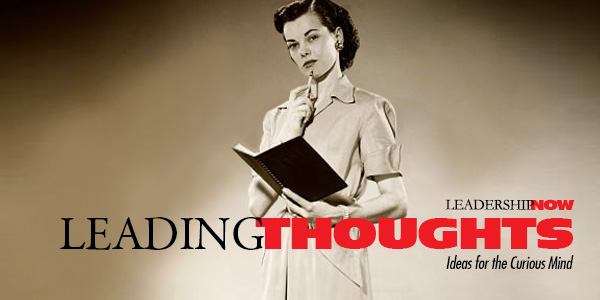
IDEAS shared have the power to expand perspectives, change thinking, and move lives. Here are two ideas for the curious mind to engage with: Herman Cain on focus: “The essence of focus is sacrifice. Leaders who cannot bring themselves to give up the unnecessary stuff for the sake of the necessary do not possess the critical leadership characteristic of focus.” Source: CEO of Self: You're in Charge Josh Axe on how to begin the hero’s journey: “When you accept responsibility for your circumstances and take radical action to change, you automatically step into the shoes of a hero. That is how you begin to write your best story possible.” Look for these ideas every Thursday on the Leading Blog. Find more ideas on the LeadingThoughts index.
Posted by Michael McKinney at 08:07 AM
05.23.24

Leading Thoughts for May 23, 2024
IDEAS shared have the power to expand perspectives, change thinking, and move lives. Here are two ideas for the curious mind to engage with: Judge Charles W. McCoy on keeping an open mind: “The human mind contains a door, one that either opens to new ideas or closes them out. The door swings on hinges like any other, opening as it searches for understanding and closing as it makes. Judgments. Herein lies a crucial truth. Sharp thinkers do not take open minds for granted. They concentrate on keeping their minds open long enough to gather all the relevant information needed for making sound judgments. Mediocre thinking begins judging at the outset, and often confuses preconceptions with real understanding. As the old saying goes, “Some people never learn anything because they understand everything too soon. Source: Why Didn’t I Think of That? Think the Unthinkable and Achieve Creative Greatness James Autry and Peter Roy on integrity: “The choices that will create the most frustration and anxiety, as well as the greatest challenge to your ability to maintain an ethical balance, will be about relationships, not about money. Once you recognize that your integrity is on the line every day, then your work life takes on a different meaning. You realize that as you begin to face the choices and make the ones that reflect your true self, then you can have an enormous impact on your workplace, regardless of your position in the organizational hierarchy.” Source: The Book of Hard Choices: How to Make the Right Decisions at Work and Keep Your Self-Respect Look for these ideas every Thursday on the Leading Blog. Find more ideas on the LeadingThoughts index.
Posted by Michael McKinney at 01:34 PM
05.20.24

Creating a Supportive Environment for Organizational Change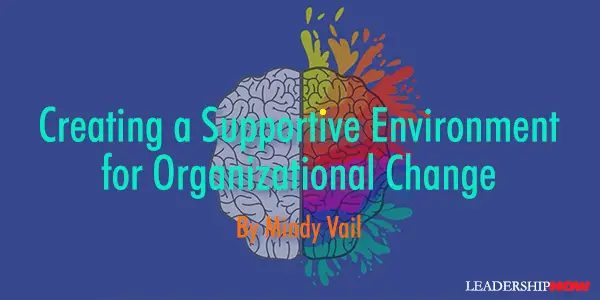
TODAY, change management is an integral part of organizational strategy. Yet, change in any form or context tends to challenge our sense of stability and security. Whenever new concepts, methods, or ways of thinking are introduced, they are bound to come up against resistance. Apprehension about the future impedes progress and undermines well-conceived change efforts. What’s more, in any change initiative, making assumptions regarding people’s perspectives toward a given change can undermine its success. Picture a runner at the start line of the Boston Marathon. While this runner is prepared to sprint when the starting gun fires, those further back are unaware that the race has begun and, given their position in the pack, will start out at barely a jog. In change management, assuming everyone is prepared at the same time to move at the same pace can result in miscommunication, resistance, and disengagement. When all team members that the change impacts haven’t been adequately informed or involved in the process, it leads to disparities in understanding and engagement. Effective leadership during times of change involves recognizing and managing one’s own reactions while also understanding and empathizing with the responses of others. It requires that leaders acknowledge employees’ struggles, facilitate open communication, and offer support. Conversely, turning a blind eye to these issues only erodes trust and morale. Successful leaders recognize their role in setting the tone, establishing the vision, and providing direction and support to their teams through a change initiative. They understand that their actions and behaviors significantly influence how change is perceived and embraced within the organization. It’s helpful to know that, despite their differences in approach and methodology, all change management initiatives share common elements. While guiding change demands a methodical strategy and meticulous preparation, employing a thoughtful approach throughout enables leaders to strengthen their own and their teams’ resilience. In doing so, they’re able to promote change not as a disruptor of stability but as a catalyst for the organization’s necessary evolution. To create a supportive environment for your change initiative, adhere to these eight recommendations:
 
Posted by Michael McKinney at 08:09 PM
05.17.24

The Negativity Fast or How to Clear Your Plate of Negative Thinking
WE are inclined to place a lot of weight on negative thoughts—far more than our positive thoughts. Our brains are wired for it. It’s called the negativity bias. And today it seems like we are thinking more negative thoughts than positive ones. And it’s not just us. Everyone seems more negative than they used to be, if not downright cranky. It becomes a vicious circle. We infect them with negativity, and they infect us too. How do we turn this around? Life is too short to spend most of our time immersed in negativity. Former negativity addict Anthony Iannarino wrote The Negativity Fast to help us implement a practical strategy to be more positive more of the time—to help us let things go. Iannarino covers ten behaviors that impact our relationship with negativity, like negative self-talk, complaining, empathy, gratitude, social media, and the way we frame what happens to us. To be sure, not all negativity is bad. We often have good reason to be negative. It is an appropriate response. But when we remain in a negative state of mind, we’re in trouble. Sometimes, we “talk” ourselves into a negative emotional state. We catastrophize events and situations. We assume the worst because we’re afraid things aren’t going to meet our expectations. Speaking of expectations, we often assume the worst of other people’s motives. You see, sometimes we’re negative precisely because we lie (even just to ourselves) about other people. We insist that they’re intentionally creating problems for us, and malice can be their only motive. One way to reduce your stress is to lie to yourself about why people do things that bother you. If you can remember a time when you were not at your best, even in public, you can empathize with them rather than throwing the first stone. Empathy is key for dealing with other people if you don’t want to get caught up in the drama. Another strategy is radical acceptance. Iannarino explains: You might have a difficult person or an event that triggers negativity. By accepting that it is what it is without judging it, you let it go. You don’t have to agree with a person to forget or forgive. Radical acceptance allows you to set it down and leave it right where it is. Being able to accept as they are, you accept that someone or something isn’t fair or that something should be different. Complaining puts you in a victim mentality and can place others in an environment that others perceive as toxic. Accept things as they are, and don’t complain. “One of the best ways to stop complaining is to turn your attention to solving the problem, addressing a challenge, or fixing what is broken. Instead of focusing on what’s wrong, you start to figure out what needs to change and how best to make things better.” When we complain, we are pointing out something that needs attention. The key here is that your complaint should be the beginning of a meaningful process. After you voice concern, you need to do something about it. On the other side of complaining is gratitude. Gratitude puts us in a positive frame of mind. We are looking for things to be thankful for in spite of what is happening around us. It shifts our focus. Reframing is the act of turning something negative into a positive lesson. You create a narrative that makes you stronger after a negative event. The traumas we experience can only limit us when we invest negative meaning into these events, telling and retelling the story. Your story or my story can be one of surviving and overcoming, or it can be one we tell ourselves to explain why we are something less after trauma. One way to be less negative is to reframe your negative events and traumas. Reframing involves addressing our assumptions about the world around us. “This means that one rebuilds one’s assumption world, incorporating the trauma information, but being able to find a new meaning or positive angle with this change in one’s life.” Our physical health affects our mental state. If you want to be more positive, you need to take care of yourself. The SHED anacronym helps you to remember the key areas of concern. Sleep (“the best meditation is sleep”), Hydration (drink more water), Exercise (it releases the feel-good endorphins and gives you more energy), and Diet (think less processed foods). When helping others, it’s hard to feel negative. “If you want to boost your self-esteem and dopamine, choose—kindness and prosocial behavior.” The Negativity Fast Challenge Over the course of 90 days, focus on eliminating as many sources of negativity as possible and replace them with something positive. Minimize or eliminate social media and other triggers in your life. Identify what triggers you. Which of the behaviors listed above could you work on? The world brings all kinds of surprises, including negative surprises. Remember, the goal here is not to be negative when situations call for negativity. The goal is to remove the sources of negativity that poison your mindset and reduce the quality of your life. You may revert to negative thinking in the middle of the challenge. That’s okay. Start over. The goal is not to be perfect but to reduce the negative thinking in your life. 
Posted by Michael McKinney at 07:17 AM
05.16.24

Leading Thoughts for May 16, 2024
IDEAS shared have the power to expand perspectives, change thinking, and move lives. Here are two ideas for the curious mind to engage with: Nido Qubein on becoming a transformational leader: “People value authenticity ahead of charisma. Charisma gets you in the door, but it takes substance to deliver results. We all must remember it’s not about us. It’s about everyone around us. They are our team; you are their coach. You have to listen to what they say and engage your mind to absorb and understand their concerns. We need to listen twice as much as we talk, and others will hear twice as much of what we say. By listening, you will gain information and knowledge. Write it down to remember it. Then, execute. The end result? Wisdom begins to blossom.” Julia DiGangi on being right: “What’s the fastest way to end a tug-of-war? Drop the rope. Maybe you’re starting to protest, “But why do I have to drop the rope? Why can’t they drop the rope?” Dropping the rope may seem like dropping out of the fight. Giving up. Losing. It’s not, though. Whoever voluntarily drops the rope is the leader. Source: Article: The Anxious Micromanager—Why Some Leaders Become Too Controlling and How They Find the Right Balance Look for these ideas every Thursday on the Leading Blog. Find more ideas on the LeadingThoughts index.
Posted by Michael McKinney at 05:47 AM
05.13.24

4 Rules to Unlocking the Secret Language of Connection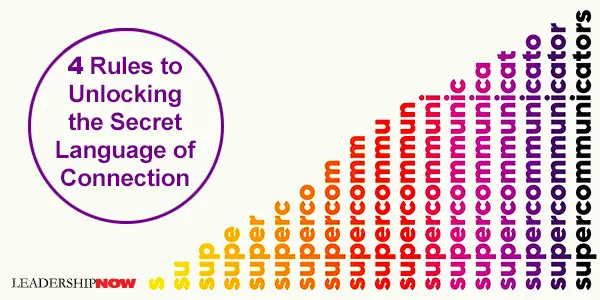
THE GOAL of any communication is to connect. Some people are supercommunicators. That is, as they talk, they align with the person they are speaking with, constantly adjusting how they communicated in order to match their companions. In Supercommunicators, Charles Duhigg explores how we communicate and connect. He explains why our communication sometimes goes awry and what we can do to make it better. “Anyone can become a supercommunicator—and, in fact, many of us already are, if we learn to unlock our instincts.” To begin, we need to understand that many discussions are actually three different conversations, and if we want to connect, we need to be “engaged in the same kind of conversation, at the same time” as the person we are communicating with. There are practical, decision-making conversations that focus on What’s This Really About? There are emotional conversations, which ask How Do We Feel? And there are social conversations that explore Who Are We? We are often moving in and out of all conversations as a dialogue unfolds. However, if we aren’t having the same kind of conversation as our partners, at the same moment, we’re unlikely to connect with each other. With that in mind, we can see that the most meaningful conversations should be characterized as learning conversations. We want to learn how others see the world and help them to understand how we see the world too. Learning conversations are based on the following four rules: Rule One: Pay Attention to What Kind of Conversation Is Occurring We miscommunicate when we are having different kinds of conversations. “Effective communication requires recognizing what kind of conversation is occurring, and then matching each other.” When we connect with others, it is because our brains have come into a kind of alignment. When we dominate a conversation, we make it difficult for others to sync up; they become pushed into their own thoughts.
Effective communication requires recognizing what kind of conversation is occurring, and then matching each other. Characteristics of Supercommunicators:
Rule Two: Share Your Goals and Ask What Others Are Seeking Every meaningful conversation begins as a negotiation about what this conversation is to achieve and how it’s going to go or how we’ll make choices together. Matching is understanding someone’s mindset—what kind of logic they find persuasive, what tone and approach makes sense to them—and then speaking their language. And it requires explaining clearly how we, ourselves, are thinking and making choices, so that others can match us in return. Rule Three: Ask About Others’ Feelings, And Share Your Own Emotions are a part of nearly all conversations if we choose to acknowledge it. When we do acknowledge it—their emotion, their vulnerability—and are vulnerable in return, we build trust, understanding, and connection. You begin by asking someone how they feel about their life as opposed to the facts of their life. Margaret Clark, the Yale psychologist, said, “The best listeners aren’t just listening. They’re triggering emotions by asking questions, expressing their own emotions, doing things that prompt the other person to say something real.” Laughter is one of proving that we hear how someone feels. We exhibit emotional intelligence by showing people that we’ve heard their emotions-and the way we do that is by noticing, and matching, their mood and energy. When we match or acknowledge another person’s mood and energy, we show them that we want to understand their emotional life. It’s a form of generosity that becomes empathy. It makes it easier to discuss How Do We Feel? Acknowledging emotions is critical when dealing with conflict. If you don’t get to the emotions, you’ll never know what the fight is actually about. “This is the real reason why so many conflicts persist: Not because of a lack of solutions or because people are unwilling to compromise, but because combatants don’t understand why they are fighting in the first place. They haven’t discussed the deeper topics—the emotional issues—that are inflaming the dispute.”
Lessons from Martial Conflict Nearly all couples fight from time to time. And whether happy or unhappy, they tend to fight about the same things. For the most part it comes down to control issues. Consider these findings: Researchers noticed that many divorces happened after major life changes, in part because these changes had triggered a sense of losing control. It might be an illness—control over our health—or a big upheaval as retirement or kids leaving for college, which makes the future seem less predictable. These shifts made people exhausted, lonely, anxious, as if they had lost agency over their days and bodies and minds. Lesson: Share control. Good thought: “It’s a complicated world, you know? You need friends who are different if you want to figure it out? Rule Four: Explore If Identities Are Important to This Discussion Our social identities shape how we speak and how we hear. In crucial conversations, we often get locked in on one identity. But we possess multiple identities so we need to look for identities we have in common. In a Who Are We? conversation, we sometimes latch onto a single identity: I am your parent or I am the teacher or I am the boss. In doing so, though, we hobble ourselves, because we start to see the world only through that one lens. We forget that we are all complex and that, if we were thinking like parents instead of doctors, we might also ask skeptical questions about the drugs a stranger wants to inject into our kids. We might remember that asking questions is what good parents are supposed to do. So, in a Who Are We? conversation, we need to begin by drawing out our conversational partners’ multiple identities. Second, we need to put everyone on equal footing. “Don’t offer unsolicited advice or trumpet your wealth or connections. Seek out topics where everyone has some experience and knowledge, or everyone is a novice.” Finally, look for similarities and create new groups by building on existing identities. 
Posted by Michael McKinney at 12:09 PM
05.09.24

Leading Thoughts for May 9, 2024
IDEAS shared have the power to expand perspectives, change thinking, and move lives. Here are two ideas for the curious mind to engage with: Lee Bolman and Terrence Deal on organizational politics: “Leaders need friends and allies to get things done. To sew up support, they need to build coalitions. Rationalists and romantics sometimes react with horror to this scenario. Why should you have to play political games to get something accepted if it’s the right thing to do? One of the classics of French drama, Molière’s The Misanthrope, tells the story of a protagonist whose rigid rejection of all things political is destructive for him and everyone involved. The point that Molière made four centuries ago still holds: it is hard to dislike politics without also disliking people. Like it or not, political dynamics are inevitable under three conditions most managers face every day: ambiguity, diversity, and scarcity.” Source: How Great Leaders Think: The Art of Reframing Biologist John Medina on sleep: “Sleep loss means mind loss. Sleep loss cripples thinking in just about every way you can measure thinking. Sleep loss hurts attention, executive function, immediate memory, working memory, mood, quantitative skills, logical reasoning ability, and general math knowledge. Eventually, sleep loss affects manual dexterity, including fine motor control and even gross motor movements, such as the ability to walk on a treadmill.” Source: Brain Rules: 12 Principles for Surviving and Thriving at Work, Home, and School Look for these ideas every Thursday on the Leading Blog. Find more ideas on the LeadingThoughts index.
Posted by Michael McKinney at 12:47 PM
05.06.24

Deploying AI Requires Understanding What’s Both Possible and Practical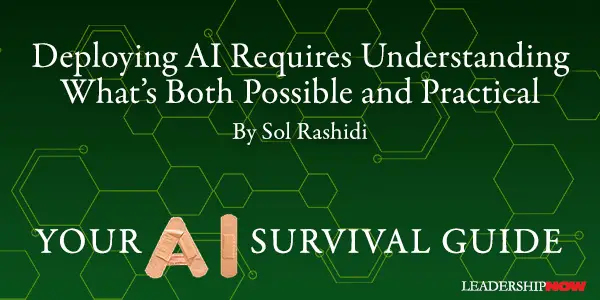
THE vast majority of today’s business leaders are either embarking on AI deployment to improve their operations or are considering it. Some 83 percent of organizations worldwide claim AI is a top priority for their business. The expansive growth of AI isn’t just a trend but a fundamental shift to the business ecosystem. The simple truth is if you don’t update your business processes to reap the rewards of growth, quality, or both that AI brings, your competitor will. It’s only a matter of time. Although most C-suite executives, mid-level managers, and data practitioners aren’t AI experts — no one is at this pace of change — they shouldn’t implement AI for the sake of implementing AI. Deploying AI requires a clear understanding of what’s both possible and practical. The business case for AI is that it can help you accelerate, facilitate, and amplify workloads and processes with better consistency and quality. Consider these findings:
Just as email transformed communication and iPhones and apps created widespread connectivity, AI is reshaping everything from healthcare to education to manufacturing to travel. In time, no industry will remain untouched. The surge of AI can be attributed to a convergence of three key factors: ground-breaking algorithms, data explosion, and enhanced computing power. Together, they’ve created a tipping point for AI. Singling out just one segment of industry, consider some of the ways retailers are putting AI to use: Every interaction online is analyzed to better understand customer’s shopping patterns, click-throughs, and page views. The system deterministically maps their preferences in order to provide relevant product recommendations. Chatbots provide customer service 24/7 without the need for human staff. Meanwhile, Crawlers and Bots scour the web and analyze customer reviews, competition, and social sentiment. This information guides retailers to align their offerings with emerging trends. Embarking on your own AI journey While your goal is to be innovative, relevant, competitive, and forward-looking, your approach should be to bend but not break your team and your operations. In order to be smart in your approach to an AI project, start with a strategy that you can realistically deploy. Use the principle of “thinking big, starting small, and scaling quickly.” I learned this principle when helping clients brainstorm how best to leverage AI within their operations. I quickly came to recognize that executives and stakeholders knew how to think big, but they also wanted to start big without thinking through the risk implications.
AI isn’t just a trend but a fundamental shift touching every aspect of our lives and the broader business ecosystem. If you haven’t already, it’s time to explore how to embark on your AI journey that will catapult your organization toward a promising future.  
Posted by Michael McKinney at 10:03 AM
05.03.24

Leadership Vulnerability: A Personal Journey Through the Eye of the Storm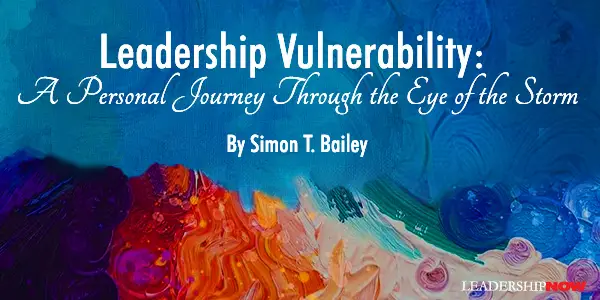
IN THE HIGH-STAKES world of leadership, where every decision can be scrutinized and every failure magnified, the concept of vulnerability often takes on a negative connotation, especially among men, who are taught to equate emotional openness with weakness. Yet, if we delve deeper into the annals of history and the realms of effective leadership, a different narrative emerges—one where vulnerability is not a liability but a profound source of strength. My own confrontation with vulnerability’s raw power came unexpectedly during a pivotal moment in my career. Tasked with addressing the top 400 leaders of Raytheon Corporation, a defense juggernaut, my inner turmoil was at its peak. The recent passing of my father had left me emotionally bereft, a state further intensified by the daunting prospect of following luminaries such as General Stanley McChrystal and Jon Meacham. Standing before these distinguished leaders, my vulnerability was not just a shadow—it was my companion. As I shared my insights, weaving through personal anecdotes of loss and resilience, the connection forged with the audience was palpable. Ultimately, the overwhelming reception to my address was a testament to the power of vulnerability in forging genuine human connections. Harnessing Vulnerability: A Guide for Leaders In the realm of leadership, where the pressure to perform and appear unflappable is relentless, allowing oneself to be vulnerable is an act of bravery. It breaks down barriers, fosters genuine connections, and cultivates an environment where innovation and loyalty can flourish. For emerging leaders aiming to chart a successful course, remember that vulnerability, wielded wisely, is not your Achilles’ heel but your strength —fortifying you face the world head-on.
Embracing Vulnerability Incorporating these strategies into your leadership approach not only deepens your own practice of vulnerability, it sets a powerful example for your team. A leader who embraces vulnerability with intention and wisdom opens a path for their team that is marked by resilience, trust, and unparalleled success. Together, these practices transform vulnerability from a perceived weakness into the very cornerstone of strong, effective leadership.  With Disney Institute as his launchpad, he’s left an indelible mark on 2,400 plus organizations in 54 countries, including American Express, Deloitte, Visa, Signet Jewelers, and Taco Bell. He has made a remarkable impact on 120,000 professionals who’ve experienced his pioneering courses on the LinkedIn Learning platform. He’s also been recognized as Success Magazine’s Top 25, alongside Brené Brown, Tony Robbins, and Oprah Winfrey, as well as being on leadersHum Top 200 Power List. His viral video, released on Goalcast through META, has over 91 million plus views to date. Learn more at simontbailey.com. 
Posted by Michael McKinney at 06:22 AM
05.02.24

Leading Thoughts for May 2, 2024
IDEAS shared have the power to expand perspectives, change thinking, and move lives. Here are two ideas for the curious mind to engage with: Robert Cooper on preparing for the unexpected: “We don’t always handle difficult situations as well as we could. Consider that the most exceptional people in many fields—athletes, teachers, and artists, for example—spend more time rehearsing than they do performing, whereas for most people, it’s just the opposite: almost no time practicing and most of their time performing. In the rush to achieve objectives, there is little attention to actually learning, in advance, better ways to live and lead. It takes serious rehearsal to build new skills, especially when the task involves overturning deeply ingrained brain patterns and habits. Source: Get Out of Your Own Way: The 5 Keys to Surpassing Everyone’s Expectations Morgan McCall, Jr. on leadership development: “People are complex tapestries of values, attitudes, beliefs, and abilities. It is misleading to believe that these ten or those ten virtues apply to all successful executives in all situations, even within the same company. How that tapestry is woven, not its individual threads, determines how it looks. The room it is hung in and the surrounding decor—not individual threads—determine whether the colors and patterns of the tapestry are a good fit.” Source: High Flyers: Developing the Next Generation of Leaders Look for these ideas every Thursday on the Leading Blog. Find more ideas on the LeadingThoughts index.
Posted by Michael McKinney at 10:35 AM
05.01.24

First Look: Leadership Books for May 2024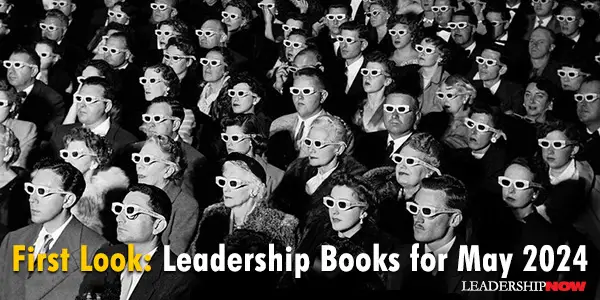
HERE'S A LOOK at some of the best leadership books to be released in May 2024 curated just for you. Be sure to check out the other great titles being offered this month.
The world’s most influential leadership expert, John C. Maxwell, tackles the problem of our divided world in his latest book High Road Leadership. “Today it is causing people to fall—into disputes, frustration, anger, and despair. His solution is to expose the problems of taking the low and middle roads when interacting with others and teach people how to instead take the high road. Leaders who practice high road leadership value all people, do the right things for the right reasons, take accountability for their actions, and place people above their own agenda. In his trademark communication style, Maxwell teaches the principles and practices of high-road leadership that can increase anyone’s influence and help them make their world a better place.
Ask leads to smarter decisions, more creative solutions, and deeper relationships. Too often, we don’t find out what’s truly on others’ hearts and minds because we don’t know how to ask the right questions in the right ways. Co-founder of Transcend and former international business consultant and Teach for America executive Jeff Wetzler wants to show you how to fix that. In Ask, he brings you a powerful method called The Ask Approach™, based on a simple premise: that tapping into what other people truly think, know, and feel is a game-changing superpower.
Becoming a CEO is a high-stakes moment, whether it's your first, second, or third time in the seat. What you say and how you act in your early days as CEO sets the tone for how you'll be perceived for years to come. Yet, until now, few CEOs have shared their stories on what worked, what didn't, and what they wish they'd done differently. In The New CEO, Dr. Ty Wiggins, an experienced leadership advisor specializing in CEO transitions, explains how to land well as a new CEO, accelerate your impact, and unlock the most affirming experience of your career.
Scott Mautz defines mental strength as the ability to self-regulate emotions, thoughts, and behaviors to achieve exceptional outcomes, despite adversity. It’s the leadership superpower of our times. Mentally strong leaders are confident and in control of themselves and their environment; they have endurance, are disciplined, and external stressors make their decision-making sharper. They’re a safe port in a storm for their team. The Mentally Strong Leader gives readers a mental exercise plan to become such a leader. Readers will walk away with a menu of over 50 proven tools they can choose from to build a tailored set of habits in six areas that will make them mentally stronger
I'm not here to make work friends. Or am I? Managers, peers, work friends, mentors, frenemies, annoying people, romantic interests, your boss's boss, and so on. We probably spend more hours with our coworkers than with anyone else. So even if they're not all perfect, it's worth building connections with them that will provide you with support, help you network and learn, and keep your career moving forward.
Inspired by venture capitalists’ unique way of thinking, The Venture Mindset offers a transformative playbook for delivering results in a rapidly changing world from a top Stanford professor and a technology executive. Venture capitalists are known for their extraordinary ability to spot opportunities. They know how to identify emerging trends, how to bring new industries into being, and when to hold them and when to fold. Their unique mindset has made them the force behind world-changing companies such as Amazon, Google, Moderna, SpaceX, and Zoom. Stanford Professor Ilya Strebulaev has devoted two decades to studying VCs’ counterintuitive approaches to decision-making and the reasons behind the successes and failures of corporate innovations. Alex Dang has witnessed up close how VCs’ thinking and mechanisms can create successful businesses at companies like Amazon and McKinsey. Combining their insight and extensive experience, they present nine distinct principles that will help you make better decisions, transform your business, and achieve remarkable results, no matter your industry.
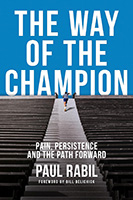 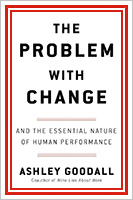 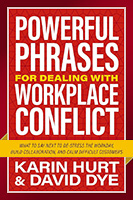 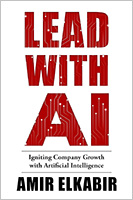
“Miss a meal if you have to, but don't miss a book.” — Jim Rohn
Posted by Michael McKinney at 08:40 AM
|
BUILD YOUR KNOWLEDGE


How to Do Your Start-Up Right STRAIGHT TALK FOR START-UPS 
Grow Your Leadership Skills NEW AND UPCOMING LEADERSHIP BOOKS 
Leadership Minute BITE-SIZE CONCEPTS YOU CAN CHEW ON 
Classic Leadership Books BOOKS TO READ BEFORE YOU LEAD |
|